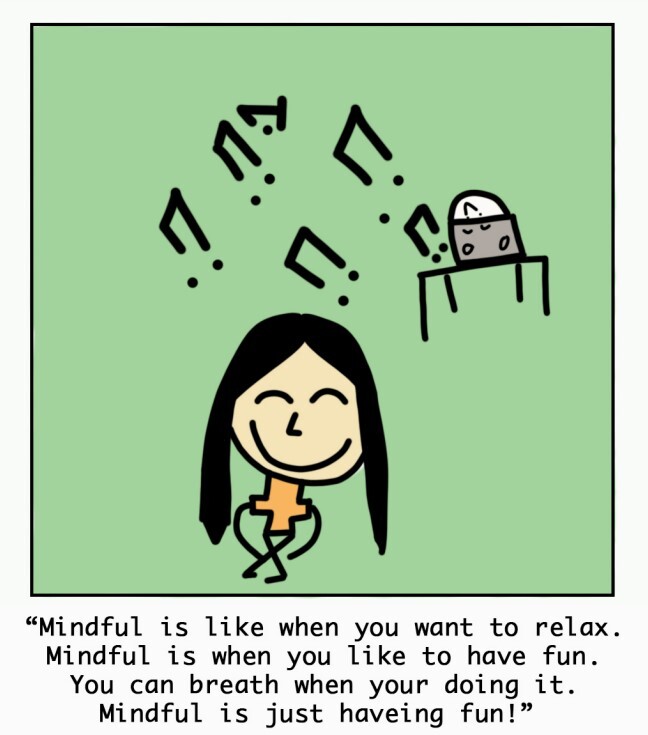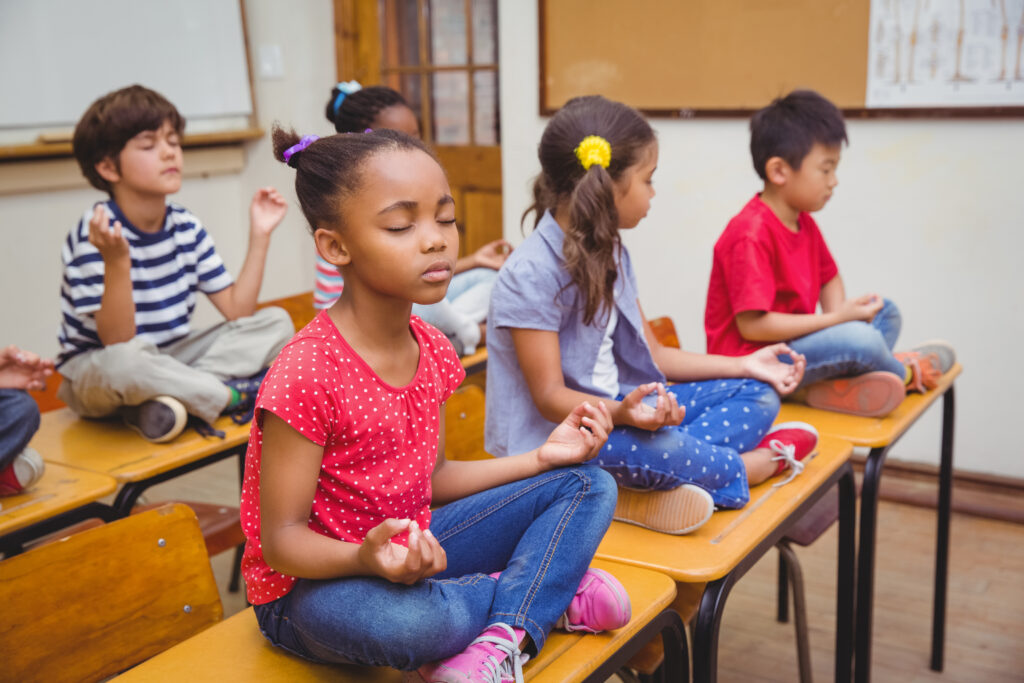
Traits of Receptive Kids
- Describe themselves as good students and “smart”
- May be overly compliant
- Like mindfulness
- Makes them calm, happy, and relaxed
- Say that mindfulness is “fun”
- Show lovingkindness, compassion
- Demonstrate an awareness or desire to be kind, compassionate, good to others, and nice
- Are conscientious students
- Recognize that mindfulness is a practice or goal
- Express desire to improve
- Attentive during instruction
- Distracted by students who don’t practice during mindfulness class

Teaching Strategies for Receptive Kids
- Since Receptive Kids may also be conscientious, “good” students who want to please the teacher, they may be bullied by other students who make fun of them during mindfulness classes.
- So, if there are Resistant Kids in class, it may be helpful to divide up the groups and address these topics with the receptive students:
- Are they being bullied?
- Strategies for handling bullying
- Anxiety: You may want to survey students on this and address strategies for managing anxiety
- Surveys on anxiety (e.g., The Spence Children’s Anxiety Scale)
- Because these students might be able to concentrate longer, they can be praised for this and given progressively longer practice periods
- Have them set goals for practice
- Encourage them to practice at home; give them logs to record their practice period and strategies for how to practice at home (e.g., find a quiet place, practice with another family member, etc.)
- Develop critical thinking skills (to balance out compliance)
Self-portraits and Quotes from Receptive Kids
(all names are pseudonyms to protect confidentiality)
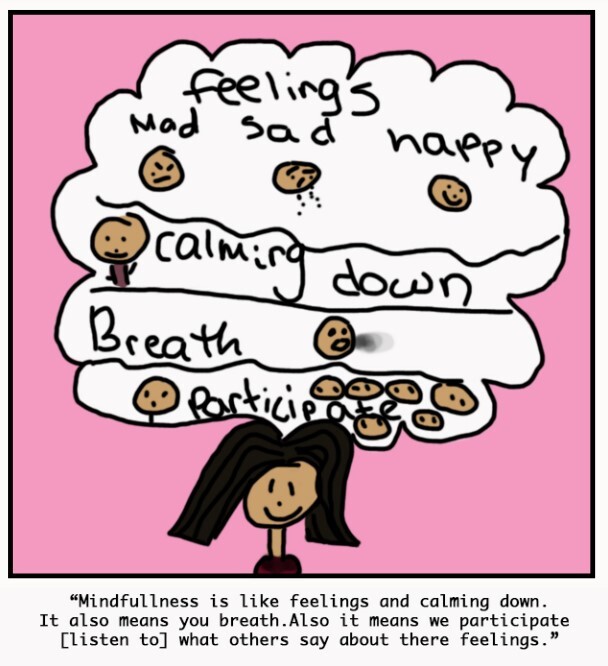
Sofia
- Was possibly a victim of abuse (she froze when someone touched her; told me her mother hit her with a broom when she didn’t do anything wrong)
- Liked to talk about her feelings
- Talked about “breathing with her heart”
- Wrote about fear of death: “I am afraid of my dying and my whole family.”
- Knew peace starts inside. “It hurts me to see gossip everywhere. But I could fight it in my heart always.”
- “I prefer to be mindful because it makes me happy.”
- Used mindfulness to regulate negative emotion: “How I could get out of a bad mood is if I breathe 5 breaths.”
- Did a lot of home practice
- Felt lonely: “I don’t want to be lonely because it’s hard to play a game by yourself.”
- Liked mindful eating. “My feeling about mindful eating is good because I felt the tasting.”
Ethan
- Was quiet, didn’t talk much
- He felt “unpleasant” when a teacher called on him in class and didn’t raise his hand
- Was friends with some of the Resistant Kids and was reluctant to be “a schoolboy”: “I guess I am a good student.”
- “I think mindfulness breathing helps you if you do mindfulness breathing right. It also works more if you do it every day or every night. It works better in a quiet place.”
- Liked playing baseball: “Mindfulness can help you play sports by making you focus and relax.”
- Emotion regulation strategy: “Ignore the bad feeling and get a good feeling. You could think of something that is good and happened. Breathe and calm down.”
- Was humble: “I guess I am smart. I guess I am a leader.”
- “A good time to practice mindfulness is when someone is being mean to you.”
- Practiced at home a lot.
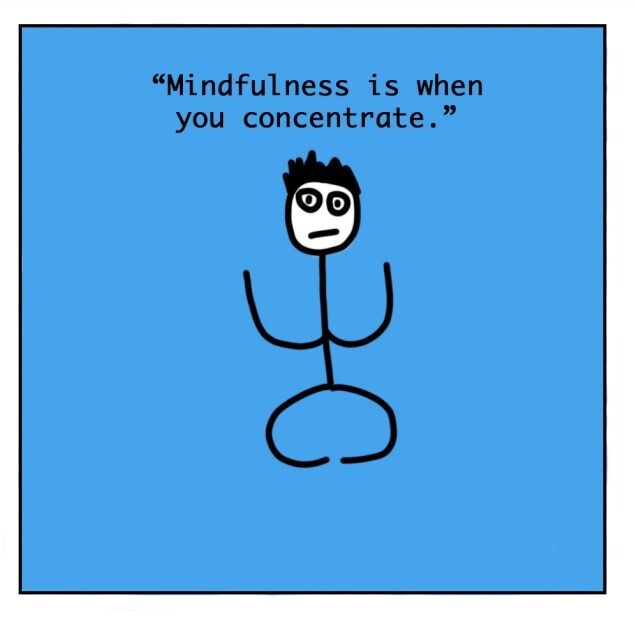
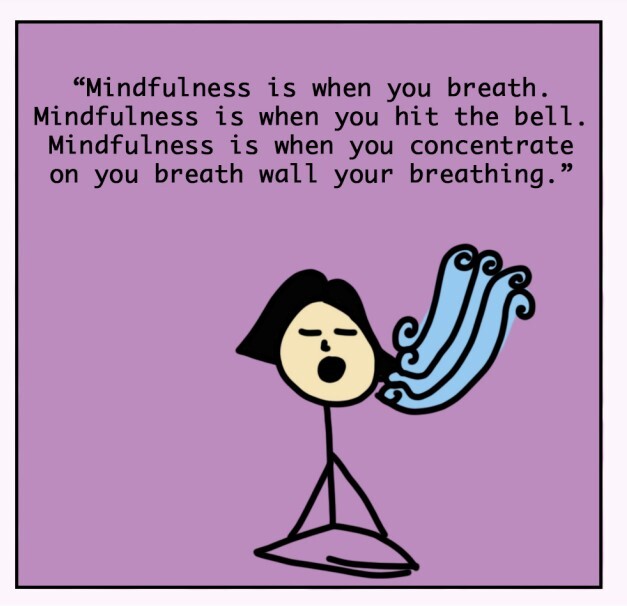
Samantha
- She called herself a good student
- Said a lot of kids in her class got bullied. “I got waffles thrown at me this morning. I wanted to tell on him. My thoughts were I wanted to sock him. I feel better because I was breathing.”
- “My thoughts and experience are that I feel calm and my experience is that some of the kids in my class don’t like mindfulness class at all.”
- She didn’t practice by herself at home; she said it was easier to concentrate on her breathing when she practiced with her dad “because he helps me concentrate.”
- Did the most home practice
- When talking about boredom she said, “The word boring means to me is it really means like if somebody says I’m bored they’re actually saying, ‘I’m tired’. Today a lot of people in my mindfulness class said, ‘I’m bored,’ and that’s not good because they won’t know how to breathe mindfully.
- “I can make negative feelings into happy feelings. I think for a moment and I try to spread my feelings to my brain.”
- She had high anxiety as measured by the Spence survey, including these types of anxiety (on which she scored above average):
- Separation anxiety
- Social phobia
- Obsessive-compulsive
- Panic/agoraphobia
- “If you breathe, you get to feel better if you’re mad, sad, or happy… It can even help you to relax… You can visit it when you start to breathe and whenever you want.”
Nicole
- Called herself a good and smart student
- Wanted to improve on mindfulness practice: “I think I need to get good at it.”
- Didn’t want to be mean: “When the grouchies get me, I try to not be mean to other people.”
- Practiced mindfulness a lot: “I focus on my breath. All of the time.”
- When was it good to practice it? “Before work. Before school. Before you go to bed. Before you go outside. Before anything is good.”
- Expressed anger at students who were disruptive during mindfulness practice. “It makes me mad when people talk when we are breathing. I don’t like when the people in mindfulness don’t want to breathe with the rest of us.”
- “I love, love mindfulness. It keeps me relaxed. It can help me if I’m sad, mad, bored.”
- “Mindfulness is just having fun.”
- Did a lot of home practice
- Considered herself a class leader
